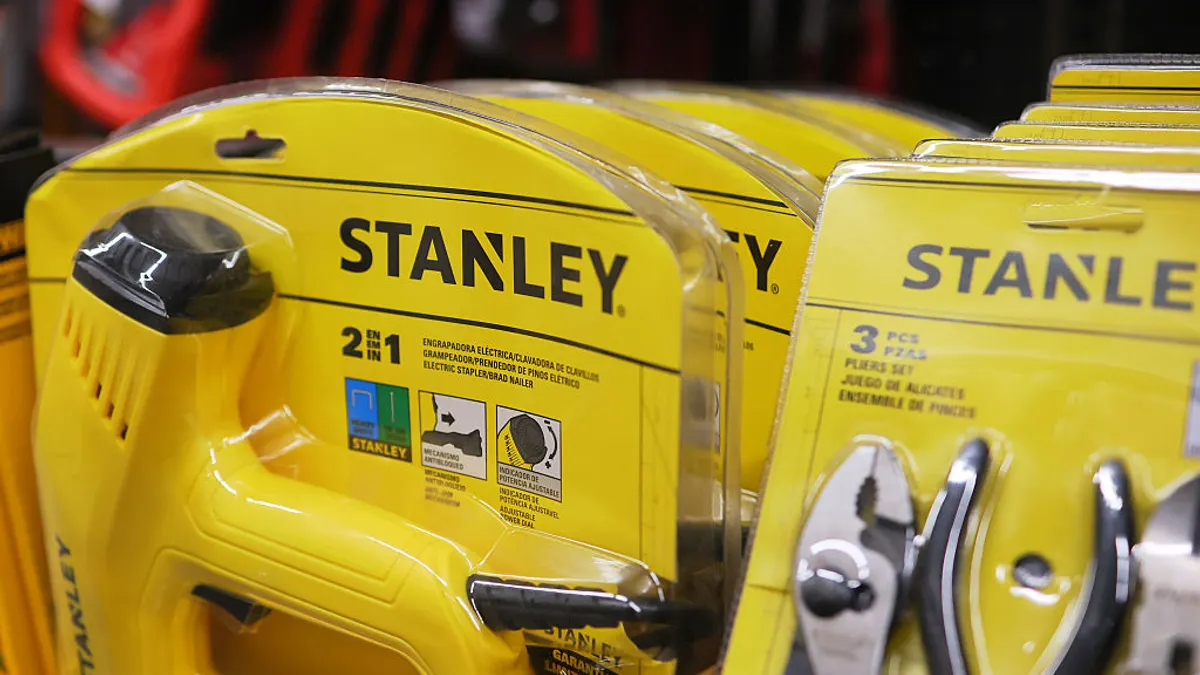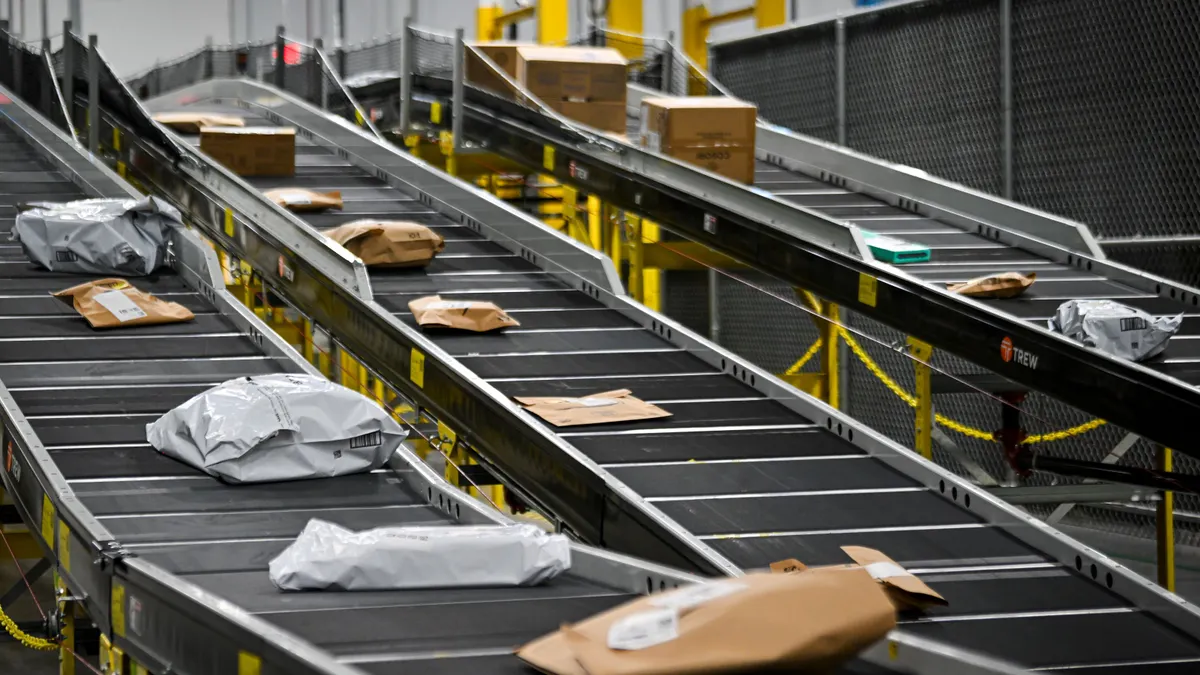Dive Brief:
- Stanley Black & Decker tapped higher prices and supply chain efficiencies last quarter to move closer to its goal of a 35% adjusted gross margin, executives told investors.
- The world's largest toolmaker achieved a 31.6% adjusted gross margin in the quarter ended Nov. 3, driven by higher prices and continued efforts to reduce U.S.-bound supply from China, EVP and CFO Patrick Hallinan said in a Nov. 4 earnings call. In the current quarter, the company expects its efforts to boost the margin to 33%, plus or minus 50 basis points.
- "We plan to reduce from 2024 levels when approximately 15% of our U.S. supply was sourced from China to less than 10% by the middle of 2026 and to less than 5% by the end of 2026," Hallinan said. "These milestones are essential for achieving targeted gross margin objectives and for improving supply chain resiliency.”
Dive Insight:
Tariff costs have put pressure on Stanley Black & Decker to raise prices while continuing to implement supply chain changes to meet the goals of a multi-year $2 billion cost-reduction program launched after the COVID-19 pandemic. The strategy's goals are to cut $1.5 billion from the supply chain and the rest from selling, general and administrative expenses, executives said during the company's Capital Markets Day last November.
Stanley Black & Decker has been rapidly shifting production of its cordless products from China to Mexico while also increasing production of items covered by the United States-Mexico-Canada Agreement, Hallinan told investors. "We're going to be working on a mitigation path of getting $200 million to $300 million of tariff expense out of the system via — whether that's shifting product out of China and/or increasing USMCA compliance."
Meanwhile, the company raised prices in April, and expects to implement a second price increase during the current quarter due to tariff-related cost increases, President, CEO and Director Christopher Nelson said.
Higher-than-anticipated production costs in the quarter, driven by tariff-induced volume softness and supply chain changes, led to a $0.10 reduction in adjusted earnings per share from estimates in the second quarter, Hallinan said. "Near term, we expect market conditions to remain dynamic and challenging."
Meanwhile, independent channel partners working through their inventories led to a 3% decline in Stanley Black & Decker's outdoor products revenue, Nelson said. "We anticipate inventory will be rightsized heading into preseason ordering for 2026.”













